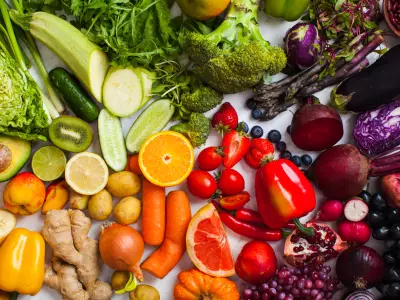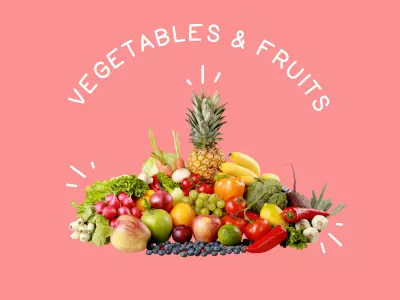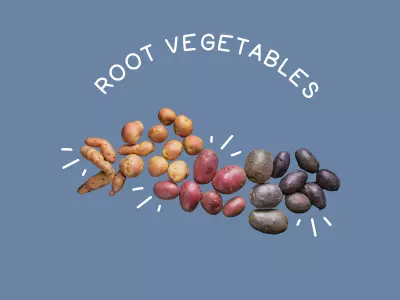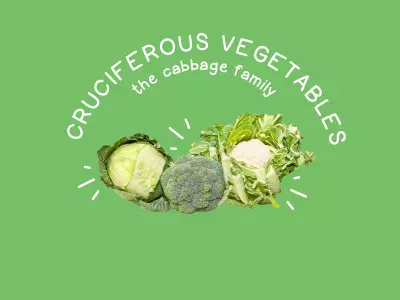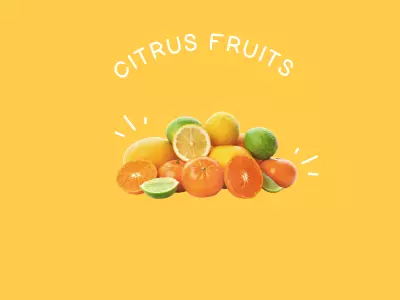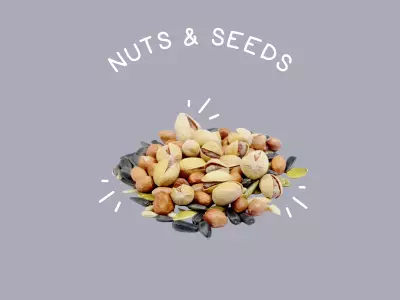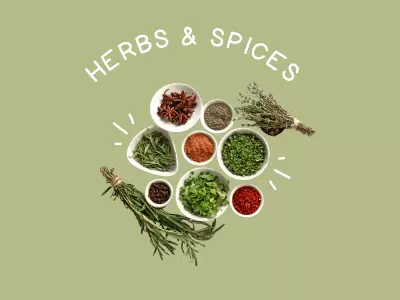The nutritionally distinct foundational Nutrivore foods are vegetables in general, alliums, cruciferous vegetables, mushrooms, root vegetables, leafy vegetables, fruit in general, citrus fruits, berries, nuts and seeds, legumes, and seafood. This means that these food families each have something uniquely beneficial to offer us and we maximize both our nutrient density and health benefits when we focus on these foods as the foundation of our diet. But, this does not mean these are the only foods to eat on Nutrivore; instead, it means that getting all of the nutrients your body needs from the foods you eat will be easiest when you prioritize these foods as the foundation of your diet. You can then round out your diet with whatever other foods you choose.
Foods benefit our health by supplying us with nutrients our bodies can use as biological constituents or for biological processes. Foods that supply a wide range of important nutrients, or alternatively, a large amount of a nutrient that’s harder to get, quantitatively improve health, for example, by reducing risk of chronic disease. When determining which foods form the foundation of Nutrivore, we look at the vast variety of studies evaluating how varying intake levels of specific foods or food groups impact health outcomes, the most relevant of which is all-cause mortality, a general indicator of health and longevity, used in epidemiological research to identify whether something is beneficial, harmful, or neutral. We also consider studies looking specifically at cardiovascular disease risk factors, cancer prevention, risk of developing type 2 diabetes, and risk of neurodegenerative disease.
Learn What Foods to *ADD* to Your Diet

Nutrivore Foundational Foods
Learn what makes the 12 Nutrivore foundational food families nutritionally unique, their health benefits, which options are the most nutrient dense, how much of them to eat, plus various fun facts, practical pointers, and busting of common myths.
This very helpful resource will introduce you to new foods and expand your nutrition knowledge, making food choices easier!
Buy now for instant digital access.
Vegetables & Fruit In General
The foundation of a Nutrivore diet is whole and minimally-processed foods, including a wide variety of vegetables and fruits.
Each family of vegetables and fruits is independently beneficial thanks to containing varying phytonutrients and fiber types. This means that eating a serving of 5 different vegetables and fruits (including different color vegetables and fruit) per day delivers more benefits than eating 5 servings all of the same vegetable or fruit. Studies have also shown that the various vegetable and fruit families offer different levels of protection against different chronic diseases. For example, cruciferous vegetables, green and yellow vegetables reduce the risk of cancer more than other vegetables or fruit; but non-cruciferous veggies, raw veggies and citrus fruit reduce the risk of cardiovascular disease the most. Again, we get the best coverage against a wide range of chronic diseases by choosing a variety of vegetables and fruits from different families.
It’s helpful to think of each vegetable and fruit family (cruciferous vegetables, leafy greens, parsley family, onion family, root vegetables, squashes, mushrooms, citrus, apple family, berries, melons, tropical and subtropical fruits, etc.) as its own food group, aiming to choose from as many different vegetable and fruit families as possible every day. It’s also worth emphasizing that eating both vegetables and fruits is more protective than eating one or the other, so it’s best not to go whole hog on veggies at the expense of fruits, or the other way around.
Importance of Vegetables and Fruit
When we look at the statistical relationship between vegetable and fruit consumption and mortality or disease risk, it becomes clear that the more of them we eat, the more protected we are.
Vegetables & Fruit
Learn more about specific vegetables, fruit and mushrooms, and why they are foundational foods on Nutrivore.
Root Vegetables and Winter Squash
Nutritionally, root vegetables vary in their nutritional composition, but due to their role as storage organs (storing nutrients and energy for the rest of the plant), they tend to be rich in slow-burning carbohydrates, fiber, vitamins and minerals. Root vegetables contain a variety of carbohydrates that feed beneficial species of bacteria in the gut, including being especially awesome at supporting the growth of two particularly important genera of probiotic bacteria: Bifidobacterium and Lactobacillus. Bifidobacteria carry out a huge number of roles, including producing vitamins, preventing pathogens from colonizing the gut mucosa (including E. coli), protecting against yeast overgrowths, improving the gut barrier function, and reducing endotoxin transport. Likewise, lactobacilli (including the most widely used probiotic, Lactobacillus acidophilus) help inhibit the growth of pathogens such as H. pylori (through a process called “competitive exclusion”), and some species have anti-cancer and anti-diabetic effects.
For every 100 grams of root vegetables we consume daily, risk of all-cause mortality (a general indicator of health and longevity) decreases by a whopping 24%. Eating 2 servings per week reduces diabetes by 20% compared to 2 servings per month.
Root Vegetables
Root vegetables are nutrient-dense sources of fiber and resistant starch that support the growth of beneficial bacteria in our guts. In fact, root vegetables are the most beneficial vegetable family for our overall health. They have an average Nutrivore Score of 701.
Cruciferous Veggies (the Cabbage Family)
The cruciferous veggie family, also known as brassicas or the cabbage family, are high in fiber and rich in vitamins and minerals, but even more impressive is the array of phytonutrients crucifers are famous for (especially sulfur-containing glucosinolates).
A systematic review looking at 95 studies evaluating fruit and vegetable intake showed eating 100 grams of cruciferous vegetables per day, on average, led to an 18% decrease in ischemic stroke, a 17% decrease in hemorrhagic stroke, a 16% decrease in total cancer risk, and a 12% decrease in all-cause mortality and cardiovascular disease. And, a pooled analysis of the Shanghai Women’s Health Study and Shanghai Men’s Health Study (encompassing 134,796 adults) found a 31% reduced risk for cardiovascular disease mortality and a 22% reduced risk for total mortality among individuals with the highest intake of cruciferous vegetables, which was 1.5 to 2 servings daily compared to about 2 servings per week.
Cruciferous Vegetables
The cruciferous veggie family, also known as brassicas or the cabbage family, are high in fiber and rich in vitamins and minerals, but even more impressive is the array of phytonutrients crucifers are famous for (especially sulfur-containing glucosinolates). Cruciferous veggies have an average Nutrivore Score of 3740.
Leafy Vegetables
Nutritionally, leafy vegetables have diverse micronutrient and phytonutrient profiles, but they all tend to be low in calories and high in fiber, folate, manganese, carotenoids, and vitamin K1 (which is involved in photosynthesis, and therefore is particularly high in plant leaves!).
Across the board, leafy greens offer a huge range of scientifically demonstrated health benefits. In a prospective study of over 107,000 men and women, leafy green consumption was associated with a 40% lower risk of death from colorectal cancer. A meta-analysis of eight studies from around the globe found that intake of green leafy vegetables was associated with a 16% reduction in cardiovascular disease—possibly due to their bile acid binding capacity (helping reduce cholesterol levels), their nitrate content (helping contribute to the body’s nitrite and nitric oxide pools), specific micronutrients (such as magnesium), or certain phytonutrients (such as lutein, which acts as an antioxidant). A prospective study found that among older and elderly adults, the highest quintile of green leafy vegetable intake correlated with slower cognitive decline (an average of 1.3 servings per day was associated with the equivalent of being 11 years younger in cognitive age!).
Studies show that, for every 100 grams per day of leafy vegetables, risk of all-cause mortality decreases by 22%. In addition, eating a serving almost every day reduces cardiovascular disease by 16% compared to rarely.
Leafy Vegetables
Nutritionally, leafy greens have diverse micronutrient and phytonutrient profiles, but they all tend to be low in calories and high in fiber, folate, manganese, carotenoids, and vitamin K1 (which is involved in photosynthesis, and therefore is particularly high in plant leaves!). Leafy vegetables have an average Nutrivore Score of 3476.
Alliums (the Onion Family)
The onion family, also known as alliums, includes hundreds of different species belonging to the genus Allium, although the ones we’re most likely to see on a dinner plate are onions, garlic, leeks, chives, scallions, and shallots. The word “allium” is believed to derive from the Greek ἀλέω (or aleo), which means “avoid,” and refers to the potent odor of these vegetables! Nutritionally, alliums tend to be excellent sources of fiber, vitamin B6, folate, vitamin C, vitamin K, manganese, potassium, and iron. What’s more, alliums boast a number of important phytonutrients—most notably the organosulfur compounds (such as cepaenes and thiosulfinates) that characterize their taste, but also kaempferol, quercetin, fructans, ferulic acid, caffeic acid, anthocyanins (in red- or purple-colored alliums), beta-carotene (in green alliums like spring onions and chives), flavonols (in yellow-fleshed and brown-skinned onions), chlorophyll (in leeks, chives, and scallions), saponins, and myricetin and apigenin (especially in garlic).
Studies show that for every 100 grams per day of alliums, risk of all-cause mortality decreases by 24%. But, we don’t need to eat that much alliums to benefit: Eating ½ serving per day decreases cardiovascular disease by 21% compared to rarely eating alliums, and one study found that men consuming a mere 10 grams of onions per day were 70% less likely to develop prostate cancer than men consuming under 2 grams of onions daily.
Alliums
Alliums, also known as the onion family, which consists of several vegetables, all known for being incredibly health promoting! Consumption of alliums is linked to numerous health benefits including lower risk of cancer and improved cardiovascular health. The average Nutrivore Score of alliums is 2142.
Mushrooms
A large body of scientific evidence has shown that edible mushrooms, in addition to being delicious, have amazing health-promoting properties which can include: antioxidant, cholesterol-lowering, antihypertensive, anti-inflammatory, immunomodulatory, liver-protective, antidiabetic, anti-obesity, antitumor, antiviral, and antimicrobial effects. In addition, mushrooms are uniquely beneficial for the gut microbiome, reducing growth of pathogens like candida, and supporting a healthy and diverse gut microbial community. These benefits are attributable to the superior nutrient-density of mushrooms, especially their unique fiber types and phytonutrients. In particular, mushrooms are abundant in phenolics, triterpenes, ergothioneine (a.k.a. the longevity vitamin), and chitin, chitosan and glucan fiber types.
One study showed that eating 100 grams of mushrooms daily reduces risk of all-cause mortality by a whopping 26%. Another study showed that eating any amount of mushrooms reduces all-cause mortality by 16% compared to no mushrooms.
Mushrooms
Mushrooms are extremely nutrient-dense while containing unique fiber types not available in other foods (chitin, chitosan and glucan), plus phenolics, triterpenes, and ergothioneine (a.k.a. the longevity vitamin). The average Nutrivore Score of mushrooms is 2704.

The Best Mushroom Extracts
- Wild-harvested, organic and sustainably-sourced mushroom extracts
- No starch, grain, fillers or mycelium
- Gluten-free, non-GMO and Vegan
- Verified for quality at accredited 3rd party labs
- Save 25% off, no code required
Citrus
Along with being delicious, the impressive health benefits of citrus fruit make them absolutely worth including in our diets. In particular, eating citrus fruit regularly is associated with reduced risk of cardiovascular disease, depression, dementia and all-cause mortality.
A systematic review and meta-analysis of 95 studies found that citrus is significantly associated with lower risk of cardiovascular disease and mortality: high (versus low) citrus consumption reduced the risk of ischemic stroke by 22%, of hemorrhagic stroke by 26%, of cardiovascular disease by 22%, and of all-cause mortality by 10%. Among 28,000 participants from the Women’s Health Study, oranges were associated with a reduced risk of hypertension. A study of 10,623 Japanese adults with no history of cardiovascular disease found that near-daily intake of citrus fruit (compared with infrequent intake of citrus fruit) was associated with a 43% reduced risk of cardiovascular disease in men and 49% reduced risk in women. Another study found that a single serving of red grapefruit each day was able to lower LDL cholesterol by 20.3% and triglycerides by 27% among adults with heart disease.
For every 100 grams per day of citrus fruits, risk of all-cause mortality decreases by 6%. And just 2 or 3 servings per week reduces all-cause mortality by 8% compared to no citrus.
Citrus Fruits
Citrus confers unique benefits due to its high concentration of vitamin C, fiber, and phytochemicals (especially monoterpenes, limonoids, carotenoids, and the flavanones hesperidin and naringin). And across the board, citrus fruits are nutrient dense but not energy dense — meaning they deliver plenty of micronutrients but not a lot of calories! Citrus fruits have an average Nutrivore Score of 391.
Berries
Berries, in general, are nutrient-dense superfoods linked with diverse health benefits, including reducing inflammation, lowering cardiovascular disease risk, lowering cancer risk, improved cognition, improved insulin sensitivity and serum glucose regulation, and improved gut health! Certain polyphenols (especially anthocyanins and carotenoids) are what give berries their unique colors, and these fruits also contain phenolic acids, organic acids (such as citric acid, malic acid, oxalic acid, tartaric acid, and fumaric acid), flavonols, stilbenes, phytosterols (including sitosterol and stigmasterol), and tannins, which collectively contribute to their famous health benefits.
A 2017 systematic review, which evaluated the dose response relationship between fruit and vegetable intake and health, showed that eating 100 grams of berries (about two-thirds of a cup) per day on average led to an 8% decrease in all-cause mortality, a general measure of health and longevity.
In addition, eating 2 to 4 servings per week reduces Parkinson’s disease risk by 23% compared to eating 1 to 3 servings per month.
Berries
Berries, in general, are nutrient-dense superfoods linked with diverse health benefits, including reducing inflammation, lowering cardiovascular disease risk, lowering cancer risk, improved cognition, improved insulin sensitivity and serum glucose regulation, and improved gut health! Berries have an average Nutrivore Score of 489.
Legumes
In epidemiological studies, consumption of legumes is frequently associated with better health and greater longevity. This is attributable to their amazing nutrient-density (especially fiber, vitamins and minerals) and the fact that they’re particularly great for increasing growth of probiotic bacteria in our guts. Across studies, beans have demonstrated a great number of health benefits, likely due to their combination of fiber and phytonutrients. A high consumption of beans is associated with reduced waist size, lower risk of obesity, and lower systolic blood pressure.
A large 2017 meta-analysis showed that all-cause mortality (a general indicator of health and longevity) decreased by 16% with increasing intake of legumes up to 150 grams (3 servings) per day. And, in a 2021 study, eating 3+ servings of legumes per week reduces all-cause mortality by 17% compared to 2 servings per month.
Legumes
Legumes (specifically pulses, i.e., beans) are the most nutrient-dense starchy plant foods (on average) that we can choose, with diverse health benefits thanks to their high fiber content and phytonutrients. The average Nutrivore Score of pulse-type legumes is 358.
Nuts and Seeds
Nuts are some of the most nutritious, whole-food healthy fat sources out there! They have been associated with lower rates of a variety of chronic diseases and all-cause mortality. In a study of adults at high risk of cardiovascular disease, eating more than three servings of nuts per week resulted in a 39% reduced risk of death from all causes. Nut consumption is also associated with lower body mass index, lower waist circumference, and lower occurrence of type 2 diabetes.
In a meta-analysis encompassing 354,933 total participants, one serving of nuts per day was associated with a 27% reduced risk of all-cause mortality and a 39% reduced risk of cardiovascular disease mortality, and the highest nut consumers saw a 14% reduced risk of cancer mortality.
Additional research has shown that nut consumption is associated with lower risk of mortality from respiratory diseases (52% reduced risk), neurodegenerative disease (35% reduced risk), infectious disease (75% reduced risk), and kidney disease (73%). With nuts and seeds, more is not better, and the benefits seem to max out at about a 1-ounce serving per day.
Nuts and Seeds
Nuts are some of the most nutritious, whole-food healthy fat sources out there! They have diverse health benefits, including reducing risk of cardiovascular disease, type 2 diabetes, obesity, depression, and cognitive decline. Nuts and seeds have an average Nutrivore Score of 276.
Nutrivore Is a Game-Changer—These 5 Free Guides Show You Why
Sign up for the free weekly Nutrivore Newsletter and get 5 high-value downloads—delivered straight to your inbox—that make healthy eating simple and sustainable.

Seafood
Fish and shellfish are not only nutrient-dense sources of highly-digestible gut-friendly complete protein, but they’re outstanding sources of important nutrients in which we are commonly deficient. In fact, every 100 grams per day of seafood decreases all-cause mortality by 7%. And, every 20 grams per day of fish decreases cardiovascular disease mortality by 4%.
Fish is a great source of vitamins B1, B2, B3, B6, B9, B12 and E, zinc, phosphorus, magnesium, iron, copper, potassium and selenium, with oily cold-water fish also providing substantial amounts of vitamin A and vitamin D. Fish with bones remaining, such as canned salmon and sardines, are the best dietary sources of calcium in the food supply. And marine fish are an excellent dietary source of iodine.
Shellfish are extremely rich sources of vitamin B12, zinc, copper and selenium while also providing impressive amounts of vitamin A, vitamin C, vitamin D, iron, copper, calcium, phosphorus, potassium, magnesium, manganese, iodine and selenium. Shellfish also contain smaller but still notable amounts of vitamins B1, B2, B3, B5, B6, and B9, while also providing dozens of trace minerals.
Fish and shellfish are also our dominant dietary sources of the long-chain omega-3 fatty acids DHA and EPA, which block multiple inflammation pathways in our cells. Deficiencies in these anti-inflammatory omega-3 fats have been linked to dyslexia, violence, depression, anxiety, memory problems, Alzheimer’s disease, weight gain, cancer, cardiovascular disease, stroke, eczema, allergies, asthma, inflammatory diseases, arthritis, diabetes, autoimmune diseases, and many others—so it’s easy to see why getting enough of them is important.
And, the high selenium content of these fish can also help protect against some cancers, enhance bone health, maintain thyroid health, reduce the risk of infection, and assist in DNA production, and protect the body from free radical damage.
Seafood
Seafood (fish and shellfish) are not only high nutrient-density foods, but they also supply the best protein and fats for our gut microbiomes. Eating seafood reduces risk of cardiovascular disease, type 2 diabetes, obesity and some forms of cancer. The average Nutrivore Score of seafood is 695.
Easily track your servings of Nutrivore Foundational Foods!

The Nutrivore Weekly Serving Matrix
The Nutrivore Weekly Serving Matrix digital resource is an easy-to-use and flexible weekly checklist designed to help you maximize nutrient-density and meet serving suggestions of Nutrivore foundational foods, all without having to weigh or measure your foods!
Includes a 22-page instructional guide and downloadable interactive guides.
Buy now for instant digital access.
Other Food Families
This does not mean these are the only foods to eat on Nutrivore; instead, it means that getting all of the nutrients your body needs from the foods you eat will be easiest when you prioritize these foods as the foundation of your diet. You can then round out your diet with whatever other foods you choose.
In fact, there are plenty of super nutrient-dense foods among the other food families:
Up Your Nutrient Game Without Restricting Foods

How to Track Nutrient Density
Discover how nutrient dense your diet already is and how to fill in any nutrient gaps.
In this webinar, Dr. Sarah will give you a new perspective on food choices via the Nutrivore Score, and teach you how to calculate your daily Nutrivore Score, intuitively create balanced meals with the Nutrivore Meal Map, and set achievable serving targets for foundational food families.
Buy now for instant digital access.


